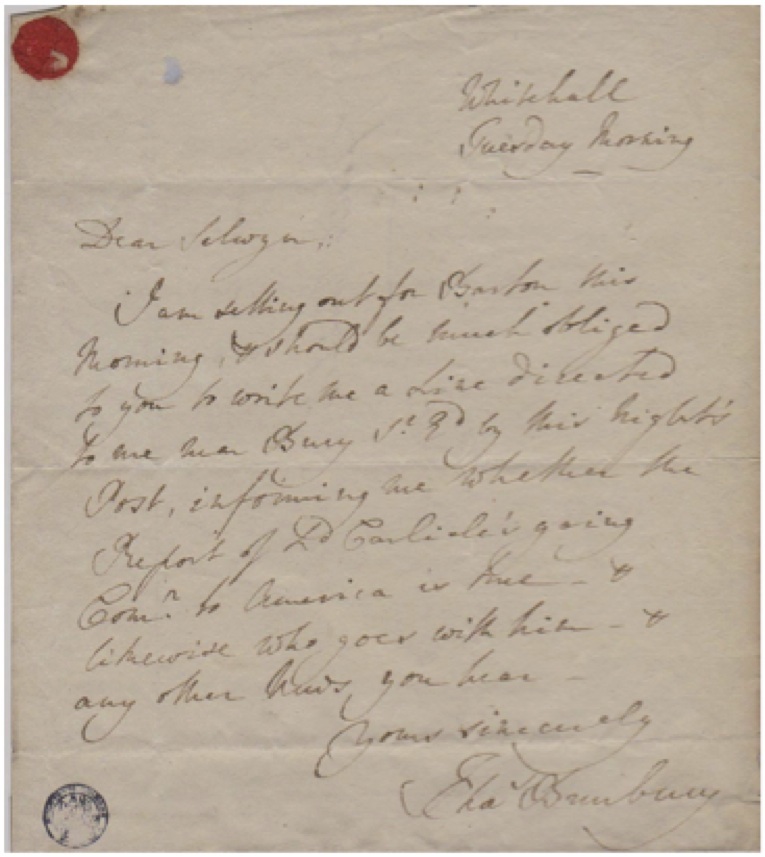

1. From George, 1st Lord Lyttleton.
2. From Rev John ‘Orator’ Henley.
5. From George James (‘Gilly’)Williams..
8. From Madame La Marquise de Stainville.
9. From Charles Townshend, n.d..
15. From Mr. Rogers
Selwyn 16: Letter from Sir Charles Bunbury
Being close to Lord North and a confident of the major politicians of the day, Selwyn was frequently asked for information that might be of use, either for profit or advancement. The following letter from Sir Charles Bunbury has a hint of the latter.
Sir Thomas Charles Bunbury, 6th Baronet (May 1740 —31 March 1821), was a British politician Bunbury was returned to Parliament as one of two representatives for Suffolk in 1761, a seat he held until 1784 and again from 1790 to 1812. He was also High Sheriff of Suffolk in 1788.
Bunbury married firstly Lady Sarah, daughter of Charles Lennox, 2nd Duke of Richmond (a grandson of Charles II), and one of the famous Lennox sisters, in 1762. Their notorious marriage, which produced no children (although Sarah gave birth to a daughter by her lover Lord William Gordon in 1769), was dissolved by Act of Parliament in 1776 (on the grounds of Sarah's adultery). He married secondly a woman by the name of Margaret sometime after 1776.
Bunbury held minor diplomatic posts but spent much of his time in parliament in opposition. He is mainly remembered as owner of the winner of the first Epsom Derby in 1780, a feat he repeated at the second running in 1781. His horses included the Derby winners Diomed, Eleanor and Smolensko. He acted as a pallbearer at the funeral of Samuel Johnson.
The Carlisle Peace Commission was a group of British negotiators who were sent to North America in 1778, during the American War of Independence. The commission carried an offer of self-rule to the rebellious colonies, including Parliamentary representation within the British Empire. After the British defeat at Saratoga in October 1777, and fearful of French recognition of American independence, the Prime Minister, Lord North, had Parliament repeal such offensive measures as the Tea Act and the Massachusetts Government Act, and sent a commission to seek a negotiated settlement with the Continental Congress. it was headed by the Earl of Carlisle, and also included George Johnstone who had previously served as Governor of West Florida.
I have no idea why Bunbury would be interested in the Commission, as he was not qualified to join it. On the other hand, he did ask Selwyn about news of certain of the French leaders for Carlisle, so maybe this was a being a bit of a double-agent, but nothing exists to prove that.
 Large image
Large image
The letter reads:
“I am setting out for Barton & should be much obliged to you to write me a line directed to me near Bury St. Ed. by this Night's Post, informing me whether the Report of Ld Carlisle's going Comn. to America is true & likewise who goes with him-& any other news you hear.”